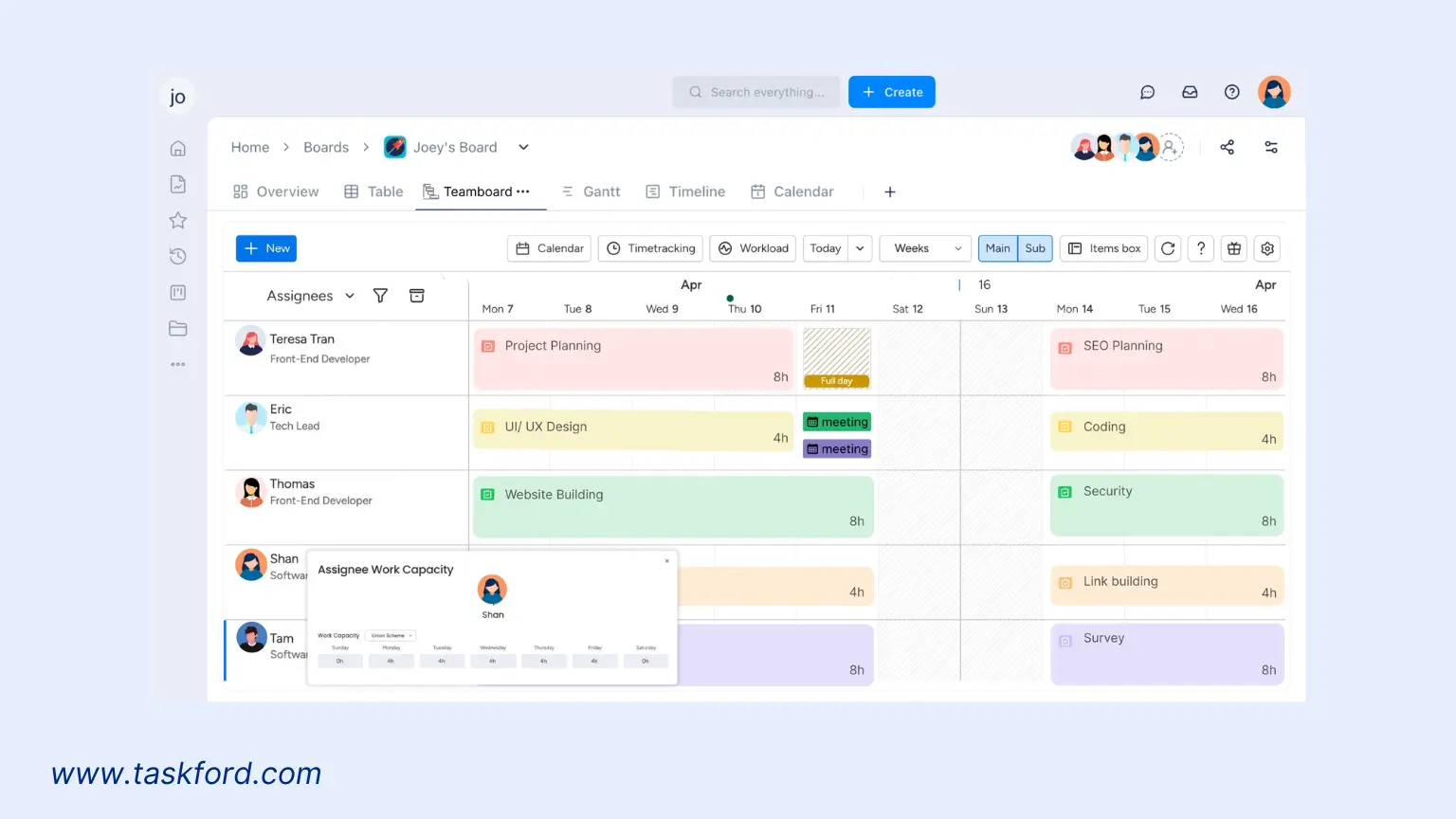Resource Scheduling in Project Management: A CLEAR Path to Success
Understand and discover a practical approach to resource scheduling to keep projects on track and teams aligned.
Effective resource scheduling is at the core of successful project management. It ensures that the right people and assets are allocated to the right tasks at the right time. Without proper scheduling, even the most capable teams can find themselves overwhelmed, misaligned, or delayed.
In this guide, we’ll cover why resource scheduling matters, explore a practical framework to approach it, and share strategies to help you apply it in your organization. Whether you’re managing complex projects or recurring operations, mastering resource scheduling can improve delivery timelines, optimize utilization, and reduce stress across teams.
What Is Resource Scheduling?
Resource scheduling refers to the process of assigning available resources like people, equipment, or budget to specific tasks over a given period. It helps project managers understand:
- Who is working on what
- When they are available
- What capacity remains
This is not just about meeting deadlines. It’s about balancing workloads, ensuring quality, and aligning project activities with broader goals. Whether you’re running a small team or overseeing multiple departments, resource scheduling is a key pillar of resource management and resource planning.
Why Resource Scheduling Matters
- Supports On-Time Delivery: With clear schedules, it’s easier to identify gaps or overloads before they cause delays. You can plan ahead, reallocate as needed, and keep milestones realistic.
- Prevents Burnout: When workloads are uneven, some team members may face excessive pressure while others are left idle. Resource scheduling enables balanced task assignments that keep everyone productive without risking burnout.
- Improves Clarity: A shared resource schedule makes team capacity visible. This helps with cross-functional planning, setting expectations with stakeholders, and coordinating between departments.
- Enhances Predictability: By analyzing past schedules and current trends, you can better predict resource needs for upcoming projects. This is an essential part of long-term resource planning.
- Aligns Efforts with Priorities: Scheduling based on project priorities ensures that your most important initiatives receive the focus they deserve, rather than reacting to last-minute demands.
Organizational Struggles Without Resource Scheduling
Without a structured approach to scheduling, many teams end up in reactive mode. Projects are delayed, workloads become uneven, and priorities shift unpredictably. Team members may be unclear on expectations, and managers are left scrambling to reassign tasks mid-project. Over time, this reduces trust and hinders performance. A well-defined scheduling system helps avoid these common pitfalls by creating order, visibility, and accountability.
The CLEAR Framework for Resource Scheduling
To help teams adopt a structured approach, TaskFord recommends the CLEAR framework. This five-step method provides practical guidance for building and maintaining effective resource schedules.

1. (C)atalog Resources and Availability
- Keep your resource list updated regularly to reflect team changes
- Use color-coded charts to visualize availability at a glance
- Don’t forget to include non-human resources like meeting rooms or hardware
Start by building a detailed overview of all resources at your disposal. This includes employees, contractors, tools, and physical assets. For each, track:
- Skills and qualifications
- Current assignments
- Availability windows (e.g. full-time or part-time)
- Time off, holidays, or leave
This step lays the foundation for every scheduling decision that follows. Without it, you risk assigning tasks to the wrong people or to unavailable ones.
2. (L)ist Project Tasks and Requirements
- Break down large tasks into subtasks for better assignment accuracy
- Include estimated effort hours to improve planning precision
- Identify any constraints early, such as task-specific certifications
Break your project or operation into a set of clearly defined tasks. For each task, identify:
- What needs to be done
- How long it will take
- What kind of resources are required
You should also note any task dependencies so you can plan in the correct order.
3. (E)valuate Resource Allocation Options
- Use basic modeling to compare multiple resource allocation scenarios
- Consider both short-term workload and long-term development goals
- Revisit past schedules to learn from previous allocation patterns
Once tasks and resources are mapped out, look at how different scheduling choices might play out. Ask yourself:
- Is this person the best fit for this task?
- Are we using our resources to full capacity?
- Are there conflicts or overlaps in assignments?
This step often requires multiple iterations and scenario planning to find the most effective schedule.
4. (A)ssign Resources and Build the Schedule
- Communicate assignments clearly and in writing
- Provide visibility into the schedule across the team
- Build in 10 to 15% buffer time to allow for unexpected delays
Once your allocations are set, assign them and build out the actual schedule. This means defining who is doing what and when. Be realistic about timelines and ensure buffer time for unplanned issues. Transparency at this stage is critical. Everyone involved should understand what’s expected of them.
5. (R)eview and Adjust Regularly
- Hold brief weekly check-ins to discuss upcoming availability
- Adjust not only for task completion but also for team feedback
- Archive past schedules for ongoing learning and improvement
No schedule is perfect or permanent. As projects evolve, resource availability may shift. That’s why it’s essential to check in regularly. Ask:
- Is the project still on track?
- Are any team members overbooked or idle?
- Has the project scope changed?
Use these insights to make adjustments quickly. This helps you avoid bigger disruptions down the line.
Common Resource Scheduling Challenges (and How to Solve Them)
Even with a structured approach, issues can still arise. Here are some common problems and tips to navigate them:
- Conflicting Priorities: Teams often serve multiple projects at once. Use a centralized schedule and agree on project priorities in advance.
- Lack of Visibility: When availability data is scattered across spreadsheets or tools, mistakes happen. Invest in a single source of truth where everyone can view and update their schedule.
- Overpromising: It’s tempting to accept every request. But overcommitting your team leads to poor outcomes. Use past data to guide capacity decisions and push back when needed.
Integrating Resource Scheduling with Project Management Tools

Even with a solid framework like CLEAR in place, resource scheduling can quickly become overwhelming without the right digital support. That’s where project management and resource management tools come into play. These platforms help automate repetitive scheduling tasks, centralize data, and keep the team aligned on current allocations.
When selecting a tool, look for features such as:
- A shared calendar view for team availability
- Task assignments and tracking tied directly to resources
- Time tracking and capacity visualization
- Reporting capabilities for historical review and forecasting
Tools like TaskFord, Float, ClickUp, or Monday.com are designed with resource scheduling in mind, offering easy-to-navigate timelines and resource capacity views that support decision-making without overcomplication.
Whatever tool you choose, the goal is the same: create a single source of truth where your team can plan, adapt, and deliver with clarity.
Final Thoughts
Effective resource scheduling doesn’t require a complicated system. What it does require is attention, consistency, and a framework that scales with your organization’s needs. The CLEAR method offers a practical path forward. When paired with good habits and regular reviews, it becomes easier to make informed scheduling decisions that respect your team’s time and your organization’s priorities.
Rather than overloading some team members while underutilizing others, resource scheduling helps you distribute work fairly. It turns abstract planning into concrete action and helps your projects move forward with fewer surprises and less stress.
If you’re aiming for more predictability, better team coordination, and fewer delays, applying a structured approach to resource scheduling is one of the most effective steps you can take.
Learn More:
Subscribe for Expert Tips
Unlock expert insights and stay ahead with TaskFord. Sign up now to receive valuable tips, strategies, and updates directly in your inbox.